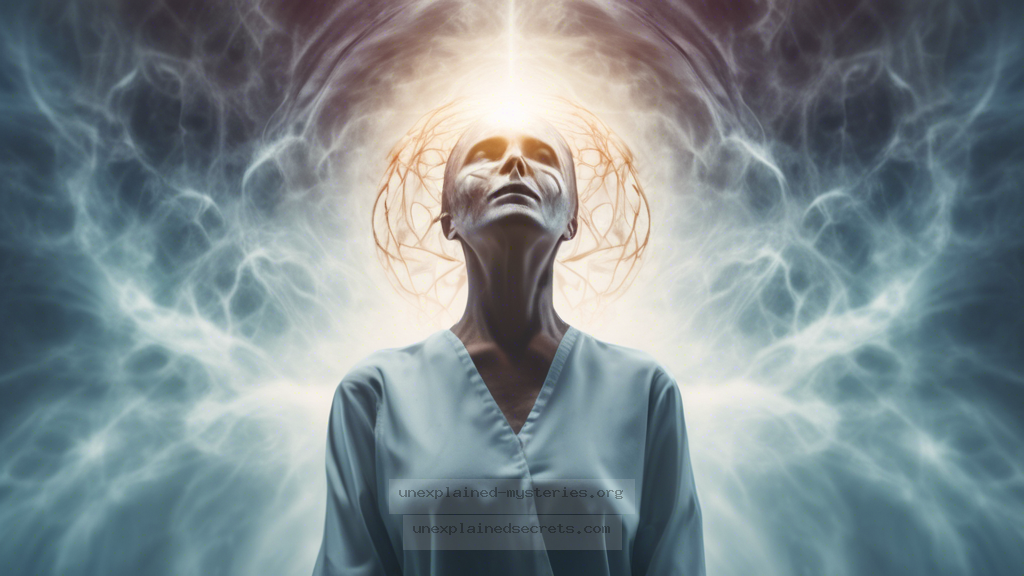What Do Near-Death Experiences Reveal About Consciousness After Clinical Death?
What Do Near-Death Experiences Reveal About Consciousness After Clinical Death?
The phenomenon of Near-Death Experiences (NDEs) has fascinated researchers, theologians, and the general public alike. As individuals report vivid experiences during moments when they are clinically dead or near death, questions about the nature of consciousness, the afterlife, and human existence arise. Understanding what these experiences reveal about consciousness after clinical death not only deepens our comprehension of life and death but also challenges fundamental notions of reality and spirituality. This inquiry matters because it touches on the very essence of what it means to be human, pushing the boundaries of science and philosophy. Let’s delve into the compelling world of NDEs and explore the insights they provide about consciousness beyond life as we know it.
Historical Context of Near-Death Experiences
Near-Death Experiences have been documented throughout history, transcending cultures and epochs. Ancient texts, such as the Egyptian Book of the Dead, speak of journeys through the afterlife, while accounts from the Middle Ages depict visions of heaven and hell. Modern documentation of NDEs began in the late 20th century, notably with Dr. Raymond Moody’s groundbreaking book, “Life After Life” (1975), which compiled numerous case studies of individuals who reported NDEs.
One of the most significant early case studies was that of a patient named Pam Reynolds, who underwent a rare surgery in 1991. During the procedure, her brain activity ceased, and she was clinically dead for several minutes. After regaining consciousness, Reynolds described a detailed account of her experience, claiming she observed her surgery from above and even recalled conversations that took place during this time, which had been verified by medical personnel. Her account, along with many others, sparked a renewed interest in the scientific study of NDEs.
Core Concepts of Near-Death Experiences
NDEs often consist of several common elements, including:
- A sense of detachment from the body
- Feelings of peace and joy
- A perception of moving through a tunnel
- Meeting deceased loved ones or spiritual beings
- A life review
- A decision to return to the body
Researchers suggest that these features may indicate a universal aspect of human consciousness that transcends physical existence. The variability in experiences often correlates with individual beliefs, suggesting a complex interplay between psychology, culture, and spirituality.
Scientific Research into NDEs
Scientific inquiries into NDEs have gained momentum in recent years, with universities and medical institutions conducting studies to understand their nature. A 2014 study published in the journal “Resuscitation” analyzed over 2,000 cardiac arrest patients and found that around 10% reported conscious experiences during the period of clinical death. These findings prompt questions about the mechanisms of consciousness and whether awareness can exist independently of brain activity.
Additionally, researchers like Dr. Sam Parnia have utilized advanced imaging techniques to explore the brain’s activity during NDEs. Parnia’s studies suggest that consciousness may persist even when brain function appears to be absent, challenging the traditional views of death and consciousness. The implications of these findings are profound, as they may redefine our understanding of the mind-body relationship and the nature of existence itself.
Practical Implications of NDE Research
The exploration of NDEs holds significant implications for various fields, including medicine, psychology, and spirituality. For healthcare professionals, understanding NDEs can enhance patient care by acknowledging the profound psychological impacts of such experiences. Patients who report NDEs often experience a transformation in their outlook on life, leading to reduced fear of death and a greater appreciation for living. This can inform therapeutic practices and support systems for individuals facing terminal conditions.
Alternative Perspectives on NDEs
While many view NDEs as evidence of an afterlife or the continuation of consciousness, skeptics argue that these experiences can be explained by physiological and psychological factors. For instance, some researchers suggest that NDEs may result from brain hypoxia (lack of oxygen), neurotransmitter surges, or psychological coping mechanisms in response to trauma.
Moreover, cultural factors play a significant role in shaping NDE narratives. For instance, individuals from different cultural backgrounds may interpret their experiences through the lens of their spiritual or religious beliefs, leading to varying accounts of the same phenomenon. This raises questions about the universality of NDEs and whether they reflect an objective reality or subjective interpretations.
Common Misconceptions About Near-Death Experiences
One prevalent misconception is that all NDEs are the same or follow a standard template. In reality, experiences can vary widely based on individual beliefs, cultural backgrounds, and personal circumstances. Some people report terrifying experiences, often referred to as “negative NDEs,” which are characterized by feelings of fear, chaos, or confrontation with malevolent entities.
Another common misunderstanding is that NDEs definitively prove the existence of an afterlife. While many individuals interpret their experiences as evidence of life after death, the scientific community remains cautious, emphasizing the need for further research to understand the complexities of consciousness and the brain.
Best Practices for Investigating NDEs
For researchers and enthusiasts interested in studying NDEs, several best practices can enhance the quality of investigation:
- Engage with interdisciplinary approaches, incorporating insights from neuroscience, psychology, and theology.
- Utilize qualitative research methods to capture the richness of personal accounts.
- Maintain an open mind while critically evaluating evidence and considering alternative explanations.
- Respect the subjective nature of NDEs, recognizing the personal significance they hold for individuals.
Future Developments and Ongoing Research in NDEs
The study of Near-Death Experiences is evolving, with ongoing research focused on understanding the neurological, psychological, and spiritual dimensions of these phenomena. Advances in technology, such as brain imaging and artificial intelligence, may provide new insights into the mechanisms of consciousness and the nature of reality.
Moreover, as society becomes more open to discussions about death and the afterlife, research on NDEs can contribute to broader conversations about spirituality, mental health, and the human experience. Collaborative efforts among scientists, medical professionals, and spiritual leaders can lead to a more comprehensive understanding of consciousness and its role in our lives.
Conclusion: The Mystery of Consciousness Beyond Death
Near-Death Experiences continue to captivate and mystify, providing a unique lens through which we can explore the nature of consciousness. While scientific research has made significant strides in understanding these phenomena, many questions remain unanswered. Whether seen as a glimpse into the afterlife or a reflection of the brain’s complex functions, NDEs challenge us to reconsider our beliefs about life, death, and what lies beyond. As research progresses, we may uncover more profound truths about the essence of consciousness and the potential for existence beyond our earthly experience.
The exploration of NDEs is not just a scientific pursuit; it is a journey into the depths of human experience and the mysteries that lie beyond our understanding. By continuing to investigate these phenomena with both curiosity and rigor, we can expand our comprehension of the intricate tapestry of life and death.
Other Articles
Recent Posts
- What Happened to Flight MH370? The Conspiracy Theories That Still Haunt Us
- What Secrets Lurk Within the Walls of the Infamous Trans-Allegheny Lunatic Asylum?
- What Evidence Supports the Existence of Bigfoot in the Pacific Northwest?
- What Happened to the Indus Valley Civilization? Unraveling the Mysteries of Ancient Urban Life
- Can Telepathy Be Scientifically Proven Through Laboratory Evidence?







